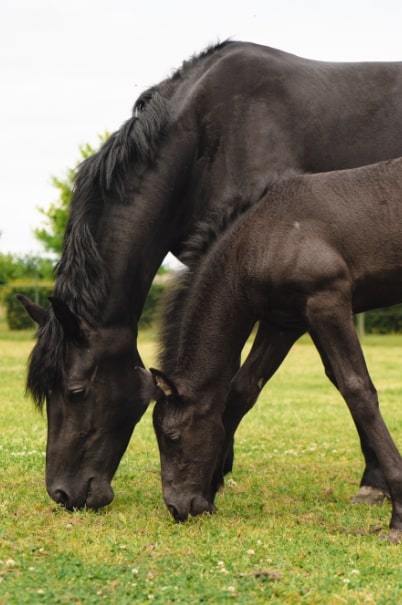Advice on the best approach to manage worms in horses has changed in recent history. It’s essential to keep up with new recommendations to guarantee a happy, healthy horse. They can help to reduce the risk of issues, particularly if you don’t use wormer effectively.
The main thing here is people view worming each horse on the property every few months as ineffective now. The contemporary way to worm is tailoring a bespoke plan for every horse in your yard. The core of this should be regular faecal worm egg counts (FWECs). The results of these tests will allow you to determine the dosing needs during summer. Also, you need to dose strategically for certain worms that don’t appear in egg counts.
More resistance
Scientists have discovered that parasites are increasing their resistance to drugs within wormers. It’s similar the situation with antibiotics becoming less effective at treating illnesses in animals and humans. The propagation of resistant worms goes up if you utilise wormers indiscriminately. Right now, there are only a handful of drugs used in equine wormers. As a result, you need to use them in a sparing manner to keep them effective.
Vets are very knowledgeable, meaning they can offer advice on all elements of horse care. Moreover, SQPs can have particular qualifications too. They can advise and even prescribe solutions in some cases. So, you can talk to an SQP or a vet if you want guidance on the most recent worming methods. You should ask their advice before deciding to give wormer to your horses.
What worm control looks like now
As for what worm control looks like in the 21st century, allow us to explain. It involves faecal worm egg counts. You should use these every 8 to 12 weeks in the grazing season from roughly March to October. Horses need treating with a targeted worming programme according to the results.
Next, there’s the encysted small redworm. They don’t appear in FWECs and need targeting in late autumn or early winter. Do this with a five-day course of fenbendazole or one dose of moxidectin.
For tapeworms, their eggs also don’t show up in FWECs. You’re best off targeting these twice a year, typically in the autumn and spring. Use one dose of praziquantel or a double pyrantel dose.
Bots (botflies) don’t appear in FWECs either. You should treat these once a year following the ‘first frost’.
Reduction tests
Something else you must do is faecal egg count reduction tests. Do these in the grazing season. It is the ideal way to check your wormer is working properly. This consists of taking a FWEC right before and two weeks after worming to inspect the amount of worm eggs being shed.
Pasture management
Good pasture management is also necessary here. Daily poo-picking, frequent rotations, resting of fields, and cross grazing with cattle or sheep will aid in keeping pasture worm burdens under control.
Finally, in the 21st century it’s necessary to keep a record of wormers you use and test results. This way, you’ll have a history of what you’ve used alongside what has and hasn’t been successful. From there, you can show this to your SQP or vet to prevent the overuse of specific wormers.
Always be careful with wormer
At JS Hubbuck Ltd, we know how important it is to be careful with wormers. There is a limited number of products, so if parasites become resistant to them all, treatment becomes impossible. That would be disastrous to animals, including horses, cattle, and sheep.
We have several types of wormer available to buy. They will help to keep your animals healthy. More importantly, we can share crucial details about them to ensure you know to use them effectively. So, if there’s anything you need from us, please get in touch.

